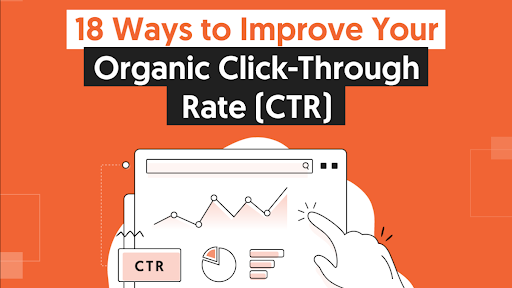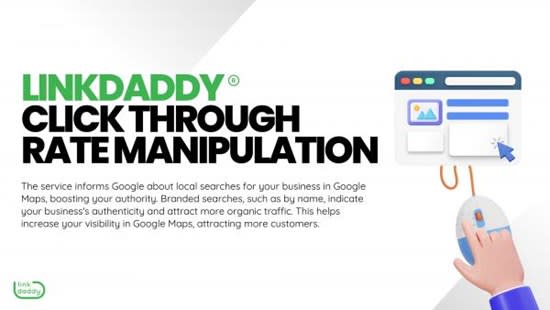Accomplishing Success With Targeted CTR Control
The optimization of click-through rates (CTR) is a vital undertaking for brands aiming to enhance their electronic presence and take full advantage of involvement. Targeted CTR manipulation encompasses an array of approaches, from data-driven ad placements to the growth of engaging content tailored to specific audiences. Comprehending the subtleties of user behavior and using techniques such as A/B screening can substantially affect performance results. The journey to grasping these methods is intricate and needs an ongoing dedication to evaluation and improvement. The inquiry remains: what details methods will produce one of the most significant results in this vibrant landscape?
Understanding Click-Through Rates
Click-through rates (CTR) function as a vital statistics in electronic marketing, reflecting the effectiveness of on the internet content in driving user engagement. This metric is calculated by splitting the variety of clicks an ad or web link receives by the total variety of impressions, shared as a percent (CTR Manipulation Service). A greater CTR indicates that the web content resonates well with the target market, triggering them to take action
Understanding CTR is vital for marketing experts aiming to maximize their projects. Different aspects influence CTR, including advertisement positioning, layout, and the significance of the material to the target market's passions. Engaging headings and visually enticing pictures can significantly boost the probability of individuals clicking on a link.
Additionally, the context in which the web content is presented plays an essential function in determining CTR. Ultimately, a comprehensive understanding of CTR empowers online marketers to refine their methods, ensuring that electronic projects accomplish their preferred end results effectively.
Importance of CTR Control
In the competitive landscape of electronic advertising, the adjustment of click-through rates (CTR) has come to be an important technique for enhancing project efficiency. CTR serves as an essential efficiency indication, mirroring the performance of on-line ads and web content in attracting customer engagement. A greater CTR not only indicates better rate of interest however likewise can bring about enhanced internet search engine positions and lower cost-per-click (CPC) rates, thereby optimizing overall advertising and marketing budget plans.
The significance of CTR adjustment lies in its capacity to educate online marketers concerning customer choices and habits. By examining CTR data, services can recognize which components of their campaigns reverberate most with their target audience. This insight permits more enlightened decision-making and the allocation of sources to one of the most effective channels.
Furthermore, efficient CTR control fosters an affordable benefit. Hence, mastering CTR adjustment is not simply beneficial; it is crucial for attaining sustained success in digital marketing efforts.
Methods for Targeted CTR
Achieving targeted click-through rates (CTR) needs a tactical technique that includes various techniques tailored to specific target market segments. One efficient technique is optimizing advertisement positionings by making use of information analytics to identify high-performing networks. By focusing efforts on these channels, online marketers can improve presence and boost involvement.
An additional essential technique is crafting engaging visit homepage headlines and contacts us to action (CTAs) A/B screening different variants can disclose which combinations resonate most with the target audience, therefore driving higher CTR. In addition, including aesthetic aspects such as distinctive images or video clips can significantly enhance charm, making material more interesting and shareable.
Customization likewise plays a vital duty; using individual data to develop customized content can foster a feeling of significance, encouraging clicks. Furthermore, leveraging social proof via testimonies and user-generated content can build trust, eventually boosting CTR.
Analyzing Customer Behavior
 Recognizing customer actions is necessary for enhancing marketing methods and enhancing overall efficiency. By examining how individuals interact with web content, online marketers can gain valuable insights into preferences, motivations, and pain factors. This understanding allows the advancement of more targeted projects that reverberate with particular target market sectors.
Recognizing customer actions is necessary for enhancing marketing methods and enhancing overall efficiency. By examining how individuals interact with web content, online marketers can gain valuable insights into preferences, motivations, and pain factors. This understanding allows the advancement of more targeted projects that reverberate with particular target market sectors.To efficiently evaluate user habits, different devices and approaches can be utilized. Web analytics systems offer information on individual involvement metrics such as click-through prices, bounce rates, and time spent on page. Heatmaps and session recordings allow marketing experts to visualize customer communications, disclosing which aspects stand out and which may be ignored.
Additionally, individual comments via studies and feedback kinds can use qualitative insights, enhancing the understanding of customer view and contentment. Segmenting individuals based on passions, demographics, and behaviors can find better refine targeting initiatives, customizing web content to satisfy varied demands.
Ultimately, continual evaluation of individual behavior is critical for adapting marketing strategies in real-time. As individual trends develop, remaining in harmony with these changes makes sure that campaigns continue to be appropriate and effective, fostering a deeper link with the target market. This fundamental understanding sets the phase for the effective application of targeted CTR control strategies.
Measuring Success and Readjusting Strategies
Determining success in targeted marketing projects needs a strategic method that incorporates efficiency metrics with continuous analysis. Secret performance indicators (KPIs) such as click-through rates (CTR), conversion prices, and client acquisition costs should be monitored continually to assess the performance of adjustment techniques. By developing a baseline, marketing professionals can examine changes in CTR and recognize trends that indicate successful involvement or possible shortcomings.
Routinely assessing these metrics enables for the prompt modification of strategies. As an example, if a particular campaign shows a substantial decrease in CTR, it may signify the need for creative revisions or a reevaluation of targeting parameters. Using A/B testing can even more improve approaches by comparing variations of ads or landing web pages, giving insight into what resonates best with the target audience.
Furthermore, integrating qualitative comments with studies or user interviews can supplement measurable data, providing a detailed view of audience perception. Ultimately, the ability to iteratively analyze and fine-tune strategies based upon real-time data promotes an extra receptive marketing strategy, ensuring that campaigns continue to be straightened with service objectives and audience preferences. This adaptive method is essential in achieving sustained success in targeted CTR adjustment.
Conclusion
In conclusion, targeted CTR manipulation is essential for maximizing electronic advertising and marketing efforts. By understanding click-through rates and utilizing tactical methods, brand names can successfully enhance individual interaction and drive conversions. Continuous analysis of individual actions and attentive dimension of efficiency indications promote prompt adjustments, guaranteeing alignment with customer choices. Ultimately, effective CTR manipulation not only increases visibility but also fosters trust fund and credibility, consequently adding to sustained growth in competitive markets.
 Targeted CTR control incorporates a variety of strategies, from data-driven ad placements to the growth of engaging content customized to specific audiences.Click-through rates (CTR) serve as a crucial statistics in digital marketing, reflecting the performance of on the internet material in driving customer interaction. A greater CTR suggests that the material reverberates well with the target audience, triggering them to take activity.
Targeted CTR control incorporates a variety of strategies, from data-driven ad placements to the growth of engaging content customized to specific audiences.Click-through rates (CTR) serve as a crucial statistics in digital marketing, reflecting the performance of on the internet material in driving customer interaction. A greater CTR suggests that the material reverberates well with the target audience, triggering them to take activity.CTR offers as a vital efficiency indicator, showing the efficiency of online ads and content in attracting individual engagement.In click here for more final thought, targeted CTR manipulation is vital for enhancing digital marketing initiatives.